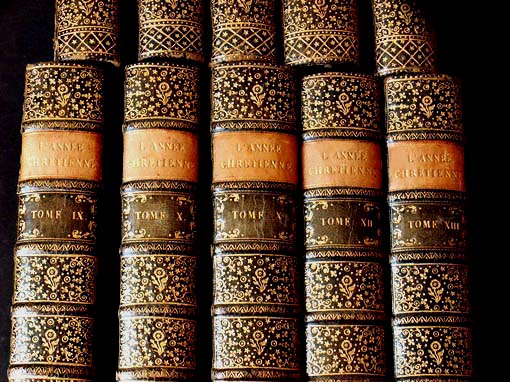

| Our next item is a set of 12 volumes (out of 13) of an early 18th century edition of L'Année Chrétienne. These books are covered with a decorative binding that appears to be from the workshops of Padeloup le jeune. Before we look at the various imprints that can be directly compared with those found on various other Padeloup productions, we must first explore some of the history behind this publication. |
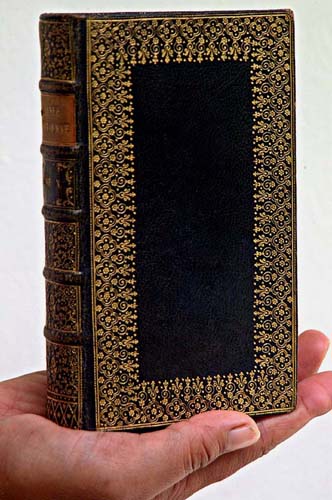
With Google you can now search through the text of over twenty billion web pages for information about this work, however the pickings are still slim and mostly in French. According to the Catholic Encyclopedia (1913), L'Année Chrétienne was originally authored by Nicolas Le Tourneux,"A well-known French preacher and ascetical writer of Jansenistic tendencies, born at Rouen, 30 April, 1640; died at Paris, 28 November 1686, Le Tourneux wrote nine volumes, and two others were added by the Belgian Jansenist, Ruth d'Ans. Six volumes were published before 1686, when they were condemned for their Jansenistic views. The work was placed on the Index on 7 Sept., 1695. Among the other works of Letourneux may be mentioned: "Principes et règles de la vie chrétienne" (Paris, 1688); "Explication litteraire et morale de l'éptre de S. Paul aux Romains" (Paris, 1695); "Bréviaire Romain en latin et francais" (4 vols., Paris, 1687), condemned by the archiepiscopal authorities because it was an innovation contrary to the spirit and practice of the Church, and because it contained much that was heretical and much that was conducive to heresy and error. Although the episcopal ban was subsequently removed, and the work was never placed on the Roman Index, the Jansenistic leanings of Letourneux stand conspicuous to-day in this as in the remainder of his writings." Thus it can be established that L'Année Chrétienne was banned by the Church in 1695, nine years after the authors death. What I have not been able to discover is when this ban was removed. One would think that it would be hard to afterwards print banned material however within the records of the French Bibliothèque Nationale (Bibliothèque nationale de France) I discovered a bewildering number of editions and printing dates that indicate that the work went through many editions and was perpetually being reprinted year after year. My main thrust in this research was to try to get some idea of when our particular set might have been bound. The first thing that stuck me as being odd about this copy was that it was a very mixed set with a wide assortment of printing dates. (Volumes 2, 3,4, and 8 are from the 1711 edition, while volumes 6 and 13 are from 1704, volume 9 from 1705, volumes 10, 11, and 12 from 1706, volume 7 from 1707, volume 5 from 1709!). From a study of the records in the BN we find that many of the examples printed between 1704 and 1711 were defectuous, with title pages that do not match the contents, this is not the case however with this set, all volumes appear to have been bound with the correct title pages. It is also noted that after 1711 the widow of Elie Josset, Jeanne Palliot, sold her husband's business to Louis Josse and Charles Robustel (Éd. postérieure à 1711 d'après le privilège qui fait état de la cession par Jeanne Palliot, veuve d'Élie Josset, du fonds et des privilèges de son mari à Louis Josse et Charles Robustel, en mai 1711), however the title page still retains the mention "De la boutique de feu M. Josset" (see the title pages compared below). Obviously then this set was bound sometime after 1711. From a further study of the BN records, it appears as though the first six volumes were published by Helie Josset between 1682 and 1686 in four separate editions, Tome VII also was printed in 1686, Tome VIII in 1691, Tome IX in 1692, Tomes X and XI in 1693, Tome XII in 1694, and finally Tome XIII in 1701. Thus there would not be a complete set available before 1701. In another record we find a second edition of Tome XII was published in 1695, thus each volume may exist in a number of different editions, however the first complete edition of all 13 volumes may not have occured until much later, the publisher changed his name from Helie Josset to H. Josset and later to Elie Josset over this same period, while the printers mark remained unchanged, bearing the motto "CANDOR ET ODOR" |
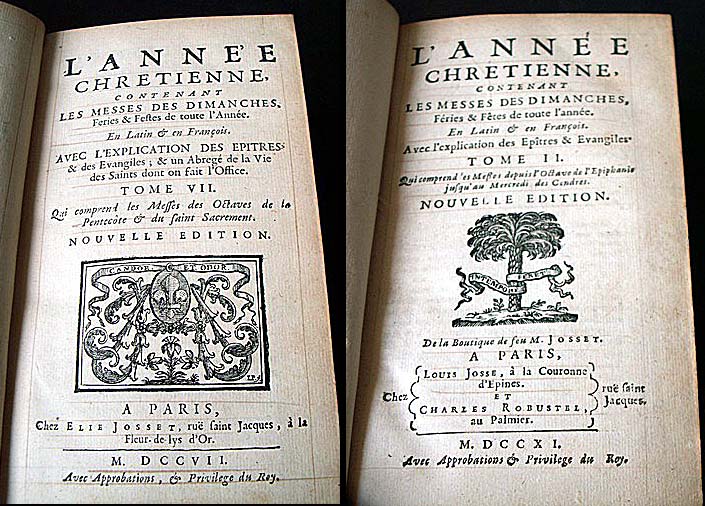
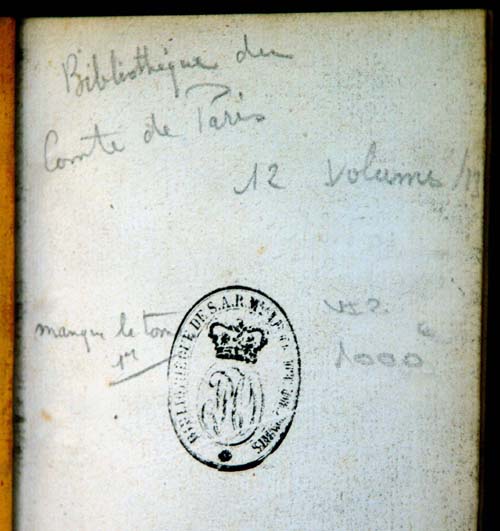
| I would now like to point out another feature of this set which is perhaps more than a coincidence. The reader is reminded that in the previous pages we have observed that a good number of Padeloup's decorative bindings are linked to the Orléans family. Here in this particular set we find that all volumes are stamped with cachet of the Count of Paris, prince and heir to the throne (after 1842), grandson of King Louis-Phillippe d'Orléans. |
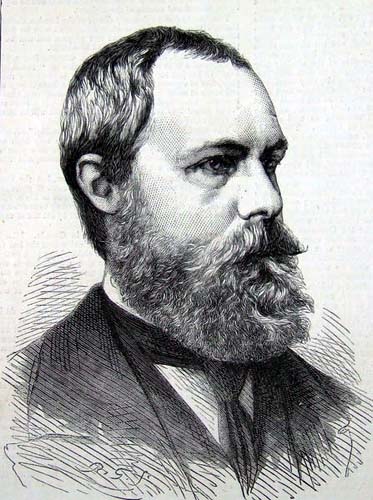
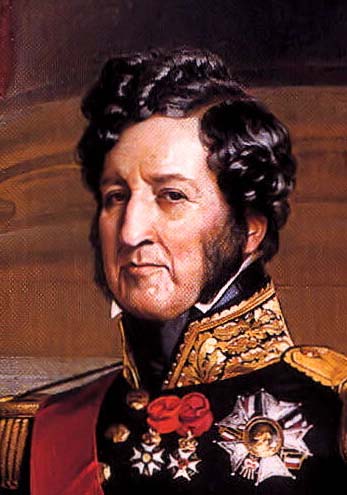
|
Louis Philippe d'Orléans, (1773-1850) King from 1830 to 1848, also known as
the citizen King was the only Orléan (and last) King of France. His son and
heir died in 1842 making his grandson the heir. To review then the family tree... Louis d'Orléans, Duke of Orléans, (August 4, 1703 ‚ February 4, 1752) was the only son of Philippe II, Duke of Orléans, Regent of France and of his wife, Françoise-Marie de Bourbon, Mademoiselle de Blois. Louis Philippe was born at Versailles, the son of Louis, duc d'Orléans. He was known as the duc de Chartres until his father's death in 1752. Louis Philippe Joseph II, Duke of Orléans (April 13, 1747 ‚ November 6, 1793), called Philippe Égalité, was a member of a cadet branch of the House of Bourbon, the dynasty then ruling France. He actively supported the French Revolution, but was nonetheless guillotined during the Reign of Terror. His son Louis-Philippe became King of the French in the July Revolution of 1830. (Philippe II (Regent) - Louis duc d'Orléans - Louis Philippe - Louis Philippe (King and great grandson of the Regent) The books are from the library of the Grandson of the King who was himself, the great grandson of the Regent. It is tempting to speculate that these volumes were bound by Padeloup for some member of the Orléans family, early in the 18th century and then passed down over the generations to the Comte. This publication, banned by the church, in 1695 for its Janenist leaning would have been a rather controversial item on one's bookshelves, at least up to the death of Louis XIV in 1715. The Regent, who took over where Louis XIV left off, was an avowed athiest, may have viewed L'Année Chrétienne with less animosity, Thus it may be that the bindings were produced after this date. |
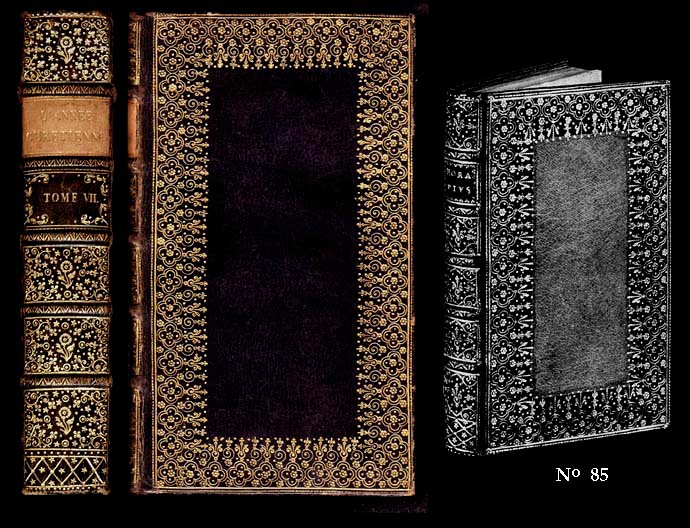
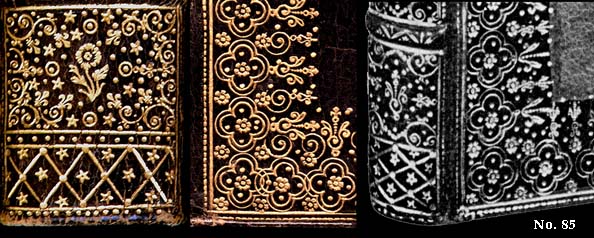
| We can now proceed to compare another Padeloup binding, item No. 85, reproduced above from the 1972 Catalogue of Raphaël Esmerian. In the enlarged detail we can observe the use of a number of identical tools as well as a very similar design layout. Below is Esmerian's accompanying description for item 85. |
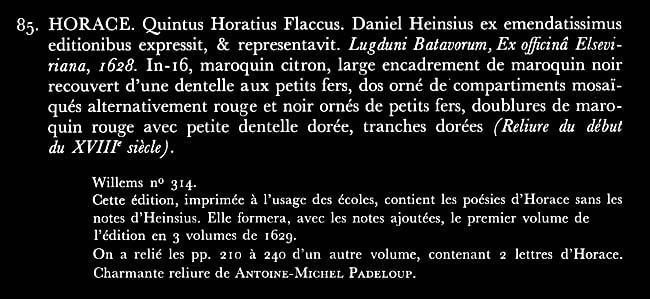
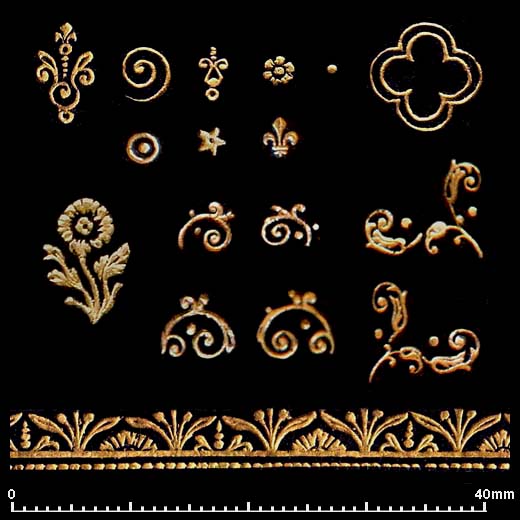
| In the diagram above I show the various Année Chrétienne imprint examples much enlarged as well as a section from the roulette that has been used on the inside of the boards (contre-plats). I have detailed certain of these imprints on the previous pages, particularly pj-17 (click on the link above to see the individual catalogue numbers of the imprints). High resolution images of this imprint taken from a number of different decorative bindings reveal that these imprints all derive from the same tool and thus in all probablity the same workshop, namely the atelier of Antoine Michel Padeloup, dit le jeune 1705-1758 (click on the diagram below for more information.) |
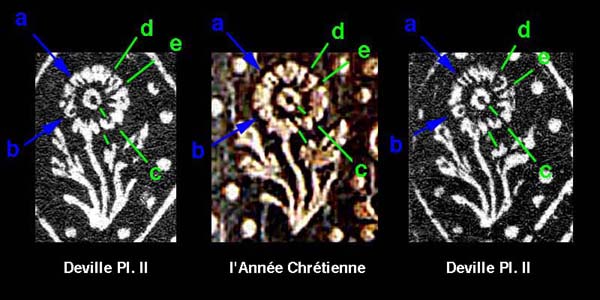
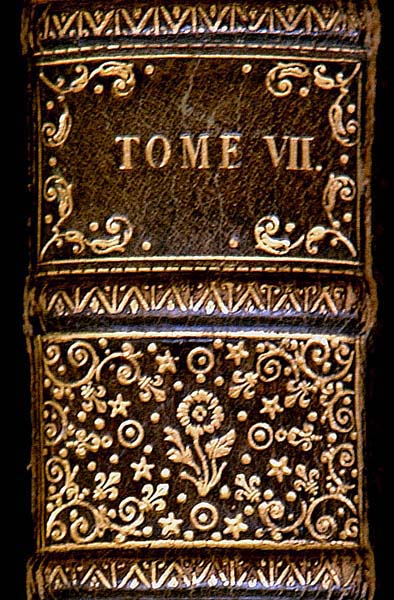
| 2009 update - I have finally acquired a complete copy of the 1930 Rahir auction catalogue entitled: LA BIBLIOTHÈQUE DE FEU ÉDOUARD RAHIR Paris 1930 - 1937, Francisque LEFRANÇOIS edit., wherein we find a reproduction of a very similar binding that is found on a 1751 printing (Item 761, pg. 14, Vol. III, 1935). Click on the image below to see an enlargement. The dentelle found on these bindings has been created with the same tools in an identical fashon, and one would be tempted to guess that these bindings all derive from the same period, i.e. 1751 or later. |
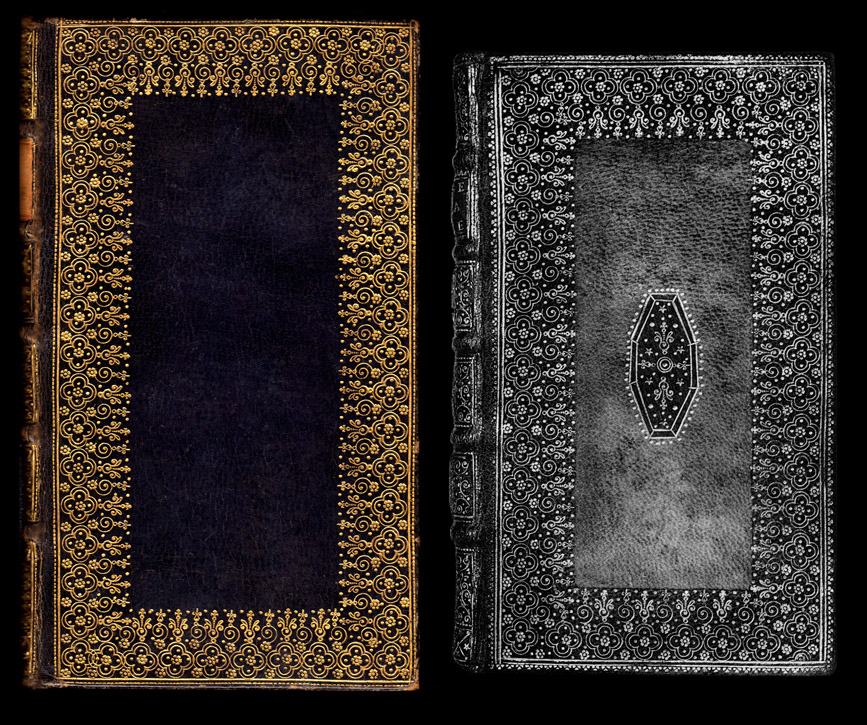
|
Return to Duseuil or Padeloup?
See also Antoine Michel Padeloup - Imprint Research. Also interesting.... A Comparative study of Pointillé tools from the Atelier of Antoine-Michel Padeloup. |
| Go to Digital Alchemy | return to the home page of cyclopaedia.org |